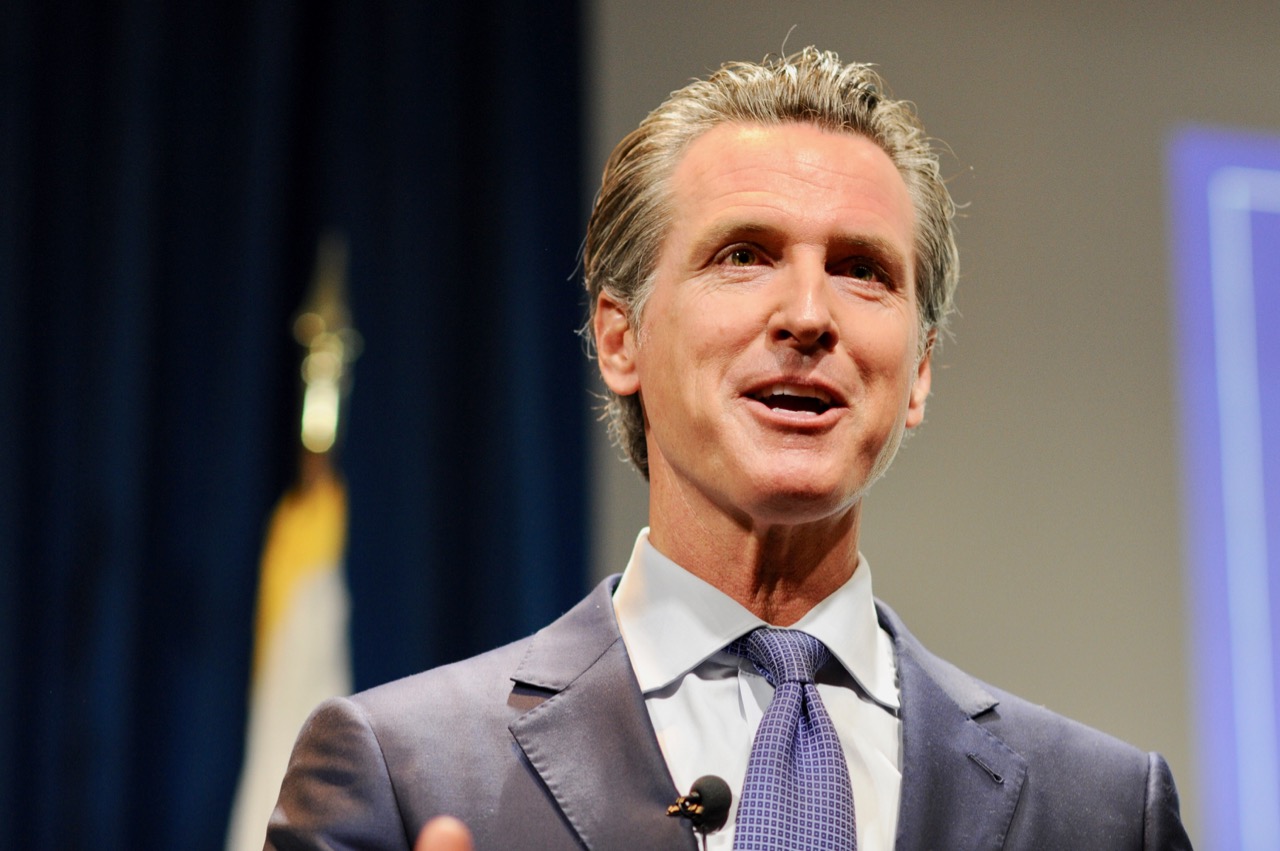
Local 1000 SEIU Sign. (Photo: Kevin Sanders for California Globe)
What Defines a Legitimate Labor Movement?
All government, indeed society itself, consists of versions of collective behavior
By Edward Ring, February 27, 2022 2:30 am
While it isn’t uncommon for anyone critical of organized labor to accuse them of being socialist, such criticism ignores an essential truth: All government, indeed society itself, consists of versions of collective behavior.
The many ways that individuals share the burden of coping with risk, chaos, and oppression, might all be considered forms of collectivist redistribution. When someone purchases an insurance policy, they are distributing the burden of an accident that may befall them onto a pool of similarly concerned individuals. When someone submits to government authority, they do so because the social contract they’re accepting, and the taxes they pay, enable them to live with increased safety and shared rules.
In this context, unions are just another form of organized behavior, accepted by individuals because it gives them a chance to live better lives. One may debate important details – should anyone be forced to join a union as a condition of getting a job, to offer one rather significant example – but the fundamental concept of collective bargaining is not some novel aberration, sprung from the bowels of Marxism. It is a normal feature in a healthy democracy.
Whether or not a union is a necessity, or an unchecked and parasitical menace, can often come down to whether or not the union represents private sector workers or public sector workers. The hypothetical examples of Sarah (private sector) and George (public sector) illustrate this point.
Sarah has worked for a major grocery store chain for the past 25 years. Adjusting for inflation, she makes less now than she did over a decade ago, especially since her hours were cut in order for her employer to avoid being required to offer her health insurance. Even more difficult, she is “on call” most of the week, without a reliable schedule, which makes it impossible for her to take on a 2nd part time job to help make ends meet. Including benefits, Sarah is lucky to make $30,000 per year. Now in her early fifties, she will need to work for as long as there is strength left in her body to do the job.
George works for a fire department serving an affluent suburb on the California coast. Taking into account the vacation time he earns as a 25 year veteran, he works less than two 24 hour shifts per week before qualifying for overtime. Since five day weekends are overkill, he often works one or two extra shifts a week, doubling his pay. When he goes on calls, 98% of the time they are medical emergencies, not fires. Including moderate amounts of overtime and the employer’s payments for his benefits, George makes about $250,000 per year. Now in his early fifties, he will retire in a year or two and collect a pension and health benefits package worth well over $100,000 per year.
Both of these individuals are hard working, honest and conscientious. Both of them perform jobs that have a vital role to play in our society. Both of them deserve to be treated with dignity and respect. Neither of them wrote the rules. And both of them are represented by unions.
While these individuals and the work they do is beyond reproach, the unions that represent them leave much to be desired. In Sarah’s case, typical of tens of millions of private sector workers, the unions who represent her have ignored economic reality in pursuit of ideological fantasies. Almost universally, to cite a particularly wounding example, these private sector unions have supported immigration policies that increase the supply of semi-skilled workers who compete with Sarah for work hours. Also common are the pragmatic alliances these unions form with extreme environmentalist organizations who have bottled up development of land and energy, driving the cost of living beyond the reach of an ordinary worker. One may cogitate endlessly over what constitutes optimal and humane policies with respect to immigration and the environment. But to agitate for higher wages and benefits in a society awash in cheap labor and artificially inflated costs for basic necessities is a fool’s errand.
In George’s case, which is equally typical, at least in California, the unions that represent him should not even be permitted to exist. Associations of government workers who engage in collective bargaining are not unions in any traditional sense of the word. They elect their own bosses, they take money from taxpayers instead of competing for consumer spending, and they operate the machinery of government which lets them intimidate or co-opt any special interest that might oppose them. They have priced normal government services beyond the capacity of ordinary taxpayers, and bred cynicism about government into the heart of any financially literate American. And government unions have even less interest than private unions in acknowledging the complexity of issues such as immigration or environmentalist overreach. In both cases, policies that harm the aspirations of private workers have the opposite effect on them, enhancing their job security.
A legitimate labor movement is easy to justify in the abstract. If not unions, what sort of movement will speak for ordinary workers in an era when jobs are being relentlessly automated, global competition is tougher than ever, and the cost of living is punitive? What sort of movement can speak for ordinary workers if, along with these challenges, the nation is gripped by a deep recession brought on because interest rates can’t go any lower and stimulative debt can’t go any higher?
The reality today is that much of America’s labor movement has gone astray. Private sector unions often put ideological goals ahead of the economic interests of their members. And public sector unions, which are not unions in any traditional sense of the word, and which represent the economic interests of their members all too well, are an abomination. They have corrupted our democracy, they are a corrupting influence on government workers because they have exempted them from the economic challenges facing private American workers, they are driving our governments at all levels towards authoritarianism, they are bankrupting our cities and counties and states, and the pension funds they control are some of the most corrupt elements of America’s grotesquely overbuilt financial sector. Maybe what would remain after abolition of public sector unions, still very powerful voluntary associations, could start fighting for CEQA reform, for example, to benefit all workers instead of just themselves. Before unions infested our governments, that’s what public service meant.
Envisioning exactly how the labor movement might best operate in the interests of the American worker is difficult but necessary. It requires balancing libertarian and mixed-capitalist economic world views. But two reforms would be a very good start. First, outlaw collective bargaining in the public sector. Second, the leaders of the private sector labor movement need to starting caring more about American workers, and less about their elitist ideological fantasies.
- Ringside: Will the Delta Pumps Operate at Capacity this Winter? - December 18, 2025
- Ringside: Will Advocates for More Water Supply Projects Find Unity? - December 11, 2025
- Ringside: EVs and California’s Future Demand for Electricity - December 4, 2025





Mr. Ring, another excellent and informative article. I wish you would seriously consider running for Governor of California. God knows this state needs some intelligent leadership.
It’s too bad you couldn’t find a more drastic example to illustrate the dichotomy between public and private compensation.*
Are you totally shameless? In real life, according to the Bureau of Labor Statistics, total compensation for all public employees is roughly equal to private sector workers in large industries, roughly half of the workforce.
Average.
As a rule, yes, lower educated, unskilled public workers earn more than equivalent private sector workers. Mainly due to higher pensions and benefits.
More highly educated public workers earn far less than in the private sector.
And in the middle, even including the better pensions, public workers are roughly equal to equivalent private sector workers.
Rather than knocking public unions, it would behoove us to increase private sector union participation.
*sarchasm
Stephen: First of all, public sector unions aren’t going anywhere, unfortunately, so the focus of my research and advocacy in recent years has been to convince their members to at least convince their public sector union leadership to start embracing policies that will revitalize California instead of destroying it. In a host of areas – energy, water, transportation, law and order, homeless, housing, forestry and education – the legislation that public sector unions support, which often if not usually has nothing to do with their wages and benefits, are ruining this state. So I’ll focus on asking members of public sector unions to quit destroying this beautiful state with what is a horrible policy agenda, and leave it for others to evaluate the most recent data regarding your pay and benefits. Obviously there are differing details, and there are possibly some areas where the private practice averages exceed public sector equivalents. I’d have to be convinced on a sector by sector basis. Don’t forget to take into account the overhead burdens carried by sole proprietors, even in the professions, and include that in whatever average you come up with. Last time I checked, for example, a public sector attorney doesn’t have to purchase malpractice insurance, rent an office, pay utilities, pay for legal subscriptions, pay an assistant, not to mention fund their pension and health benefits. More generally, as far as I can see, public sector unions are in cahoots now with the most powerful corporations and financial special interests. The idea that they’re looking out for the average worker is a joke. But it isn’t a priority to convince someone as certain of their sentiments as you appear to be. With respect, here’s some data from a few years ago.
https://californiapolicycenter.org/californias-public-sector-compensation-trends/
Edward:
“…the legislation that public sector unions support, which often if not usually has nothing to do with their wages and benefits, are ruining this state.”
In your opinion. Wouldn’t it be swell if they would just back off, thereby reducing the cost of your sponsors to promote your agenda?
Never mind that unions are already playing defense. Poorly.
“The broadest classification of political donors separates them into business, labor, or ideological interests. Whatever slice you look at, business interests dominate, with an overall advantage over organized labor of about 16-to-1. Even among PACs — the favored means of delivering funds by labor unions — business has a close to 7-to-1 fundraising advantage.”
Not to mention (again) your compensation comparisons leave a lot to be desired.
1. “Comparing apples to oranges” the average public sector compensation would be expected to be higher than the average private sector, due to the higher average education level.
2. Even comparing “averages”, public sector pay, according to the Bureau of Labor Statistics is equal to private sector workers in large corporations, either of which is higher than the average of –all– workers, and considerably higher than that of workers in small ( less than 100 workers) businesses. Since most public agencies are ” large employers “, this is a reasonable comparison.
3. Public workers, even when equally compensated overall, typically have a higher proportion of compensation in benefits, rather than wages. 70/30 wages to benefits for private workers vs 62/38 for public, but much of those benefits accrue to the private sector, directly or indirectly to the spouses and dependents of public workers. Imagine the millions of private sector workers in California who receive pensions and healthcare (and retiree healthcare). Imagine your hypothetical Sarah married to hypothetical George. Imagine the unintended consequences of reducing or eliminating all that private sector retirement and healthcare security.
https://static.tvtropes.org/pmwiki/pub/images/2009-8-5-Spy_vs_Spy_9432.jpg
There is a third spy, shades of gray. Instead of looking at public and private workers as a dichotomy, consider them symbolic.
Or symbiotic.